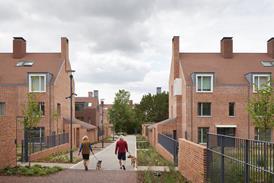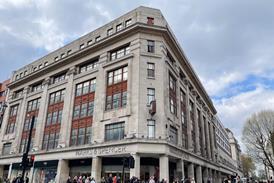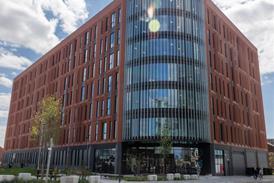Institutes call for building regs to be harmonised throughout UK

The RIBA and two other professional bodies are today calling on the government to require sprinklers in most new buildings over 11m to improve safety.
And they vowed to introduce their own guidance if the government doesn’t respond.
In a joint statement timed to coincide with today’s Parliamentary debate on fire safety and sprinkler systems, the RIBA, RICS and CIOB also called for the retrofitting of sprinklers in buildings when relevant refurbishment takes place.
The rules would apply to all new and converted residential buildings, hotels, hospitals, student accommodation, schools and care homes over 11m – or lower in the case of a particular risk.
The three organisations are also calling for buildings regs in the four home nations to be harmonised.
“Lives, stock and property are saved by the use of automatic fire suppression systems (AFSS) which includes sprinklers,” said the statement. “At present, England, Wales, Scotland and Northern Ireland differ in their requirements on sprinklers yet the science of fire knows no political or geographical boundaries.
“Harmonising building regulations across the nation states of the UK regarding the installation of sprinklers would provide clarity to the industry and help protect the public.”
The statement ended: “Each of the professional bodies will bring forward guidance for our own professionals in line with this statement in the absence of government legislation.”
The trio’s demands go further than a similar statement from the Local Government Association (LGA) which is calling on the government to lower the height limit at which new and existing residential buildings are required to feature automatic fire-suppression systems from 30m, as recommended by Hackitt, down to 18m.
At its annual conference in Brighton today the LGA, which represents 370 councils and all fire and rescue authorities in England, warned that tougher rules must be introduced to protect people living in high-rise buildings.
It said that proposals in the Hackitt report following the Grenfell fire in 2017 – that owners of existing towers blocks in excess of 30m high would have to satisfy regulators such structures were safe – did not go far enough and called for this threshold to be reduced, “given the practicalities of fire-fighting”.
Cuts to fire and rescue budgets meant that safety checks on existing towers was at risk and the government had to step in to support the work, it added.
Ian Stephens, chair of the LGA’s fire services management committee, told the conference that residents had a right to feel safe in their home and sprinklers, while not a universal panacea, “offer strong reassurance that is urgently needed following the Grenfell Tower tragedy”.
Installation should be proportionate and risk-based, Stephens said, but given that local authorities faced an £8bn funding gap by 2025 and might struggle to meet the requirements he called on ministers “to provide funding for this work as it has for the remediation of flammable cladding”.
















2 Readers' comments